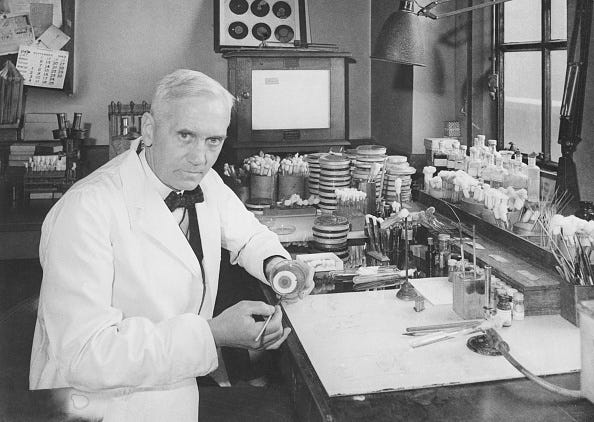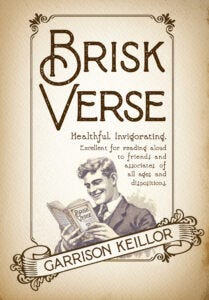The Writer's Almanac from Saturday, September 28, 2013
"Hair" by David Citino, from The Invention of Secrecy. © Ohio State University Press, 2001.
ORIGINAL TEXT AND AUDIO - 2013
On this date in 1918, a parade to sell war bonds resulted in an epidemic of the "Spanish flu" that crippled the city of Philadelphia.
The so-called Spanish flu didn't come from Spain at all; it most likely came from a Midwestern farm animal or bird. It was caused by the H1N1 virus, similar to the "bird flu" we know today. It traveled through various animal populations in the United States and eventually mutated into a strain that affected people. The first known victim was an Army private who reported to the infirmary at Fort Riley, Kansas, in March 1918. In the spring, it spread relatively slowly through the human population, and then was carried to Europe by American soldiers fighting in World War I; the first major European outbreak was in Spain, hence the name. Spain was neutral in the war, and their press wasn't censored, so they were the only country reporting on the flu epidemic.
Influenza — sometimes called la grippe — usually brought down the vulnerable: the very young and the very old. What made this strain of the flu particularly terrifying was that it was attacking young, healthy people in the prime of life. Most of the Spanish flu fatalities were people between the ages of 15 and 40. Patients came to the hospital suffering fevers over 104F. They quickly developed pneumonia, and eventually the skin began to turn blue from lack of oxygen in the blood; their bodies were drowning from the fluid in the lungs. Many were dead within three days of first becoming ill. Treatment was nonexistent; at the time, doctors thought bacteria caused the flu, and antibacterial measures were having no effect. It wasn't identified as a virus until 1933. And in any case, the sheer numbers of new cases every day, coupled with the lack of able-bodied hospital staff, made it impossible for doctors to keep up.
Navy nurse Josie Brown, stationed in St. Louis, was quoted saying: "We didn't have the time to treat them. We didn't take temperatures; we didn't even have time to take blood pressure. We would give them a little hot whisky toddy; that's about all we had time to do." She also said: "Our Navy bought the whole city of Chicago out of sheets. There wasn't a sheet left in Chicago. All a boy got when he died was a winding sheet and a wooden box; we just couldn't get enough caskets."
By the end of the summer of 1918, 10,000 people were dead. As the fall began, the virus had spread from Europe to Africa, India, and the Far East. A second wave returned to London and Boston in September. But of U.S. cities, Philadelphia was hit worst. When news of the Boston outbreak reached Philadelphia, doctors called for quarantine, but the Department of Public Health declined, partly because of a large parade scheduled for September 28 to sell war bonds. So the Liberty Loan Parade — the largest parade the city had ever seen — went off as planned, with 200,000 spectators. A few days later, the city was brought to its knees. The morgue was overloaded with hundreds of victims, and the unburied corpses brought health risks of their own.
Workers from the Bureau of Highways were called in with a steam shovel to dig mass graves. Soon, the entire city was put under quarantine. In an effort to quell panic, residents were advised: "Live a clean life. Do not even discuss influenza ... Worry is useless. Talk of cheerful things instead of the disease." Meanwhile, like a scene from the medieval Black Plague, horse-drawn carts patrolled the streets calling for people to bring out their dead. Daily deaths were 700 times the normal rate. Nearly 12,000 Philadelphians died.
The Spanish flu was blamed on the Germans. Bayer aspirin, which was manufactured in the United States under a German patent, was assumed to be poisoned. The New York Times wrote in October: "Let the curse be called the German plague. Let every child learn to associate what is accursed with the word German not in the spirit of hate but in the spirit of contempt born of the hateful truth which Germany has proved herself to be."
Eventually, the flu ran out of victims; those who survived were resistant to it for one reason or another. But with a final death toll between 50 and 100 million worldwide (600,000 in the United States alone), the Spanish flu claimed more lives than all the battles of the First World War combined.
It was on this day in 1928 that Scottish bacteriologist Alexander Fleming peered into a petri dish at his basement laboratory in London and noticed a blue-green mold growing. The mold, he observed, was killing the staph bacteria he'd been cultivating in that petri dish. He called the mold "penicillin." Penicillin is now considered the world's first "miracle drug," and it sparked the modern era of antibiotic development.
Fleming's discovery of penicillin on this day 85 years ago has often been called serendipitous. He'd left the petri dish out by accident instead of putting it away in the incubator, and then he'd gone off on holiday for a couple weeks. The damp, chilly London air had given the mold the right conditions to grown in.
But, as scientist Pasteur said, fortune favors the prepared mind. When Fleming looked into the dish and saw that blue-green mold and the growth pattern of the bacteria, he deduced that the moldy bit must be the thing that was preventing the bacteria from spreading. Noticing that penicillin was an antibacterial agent was a big deal, but it was still many steps away from making penicillin the world's most effective antibiotic. To do this, scientists needed to find a way to purify the mold — and then a way to mass-produce it.
It took a team of Oxford scientists, a Rockefeller Foundation grant, and more than a decade of experimenting to make the strain of penicillin that would become the amazingly effective infection-fighting, lifesaving antibiotic that it is today. The task became extra urgent with the start of World War II. Soldiers would survive a wound in battle only to be killed by a nasty infection from that wound later. Penicillin could cure these infections.
The team of scientists working on purifying penicillin moved their lab out of England, for fear that it would be bombed, and over to the U.S. There they experimented with the best way to grow large amounts of penicillin. They used big vats for fermenting the mold. They found that the mold from a moldy cantaloupe was the best kind of mold to start with. And they found that dumping in a by-product from corn production called corn steep liquor really helped — it made their penicillin broth about 15 times more productive. They shot UV rays and X-rays at their molds, hoping to make more productive strains. They knew they had finally succeeded when they gave lab mice lethal doses of bacteria, and then used penicillin to save the lives of those mice.
Penicillin works to kill bacteria because it prevents bacteria from correctly forming new cell walls. Without the new cell walls, the cells cannot divide properly, and so they cannot reproduce, and so the bacteria die off.
Fleming and the scientists who purified penicillin won the 1945 Nobel Prize in medicine. There are several versions of penicillin now, and they are still prescribed to treat a variety of infections. It's the most widely used antibiotic in history.
Be well, do good work, and keep in touch.®
Brisk Verse by Garrison Keillor
BRISK VERSE by Garrison Keillor, a collection of original invigorating verse. Read it to yourself or aloud to friends, family, or passersby. One hundred and thirty-two poems in all — diverse topics, including Brevity, Thongs, Minnesota, Manners, Mozart, Marilyn Monroe, Failure, Fatherhood, Episcopalians, Plumbing, Spaghetti, Spring, Online Love, Eighty, and the National Anthem as it might’ve been written by Whitman, Dickinson, Eliot, Frost, and other poets. Illustrated with quirky antique advertisements for tonics and gizmos. With a foreword by the author. 239 pp.





